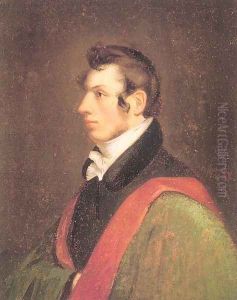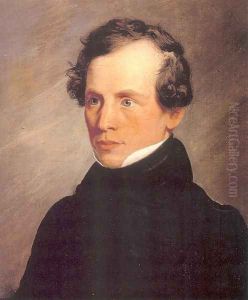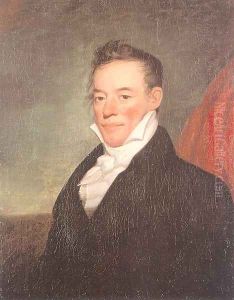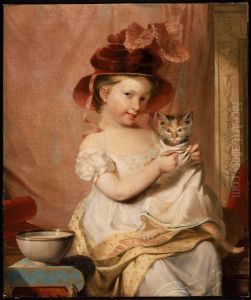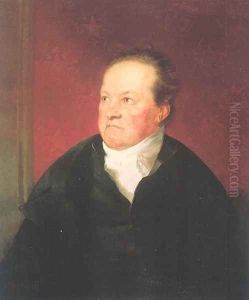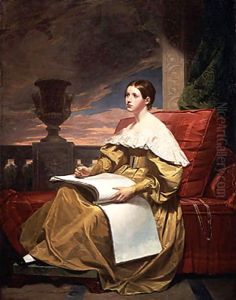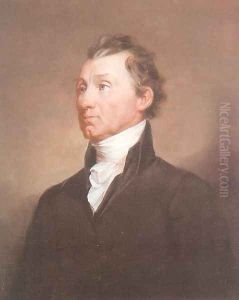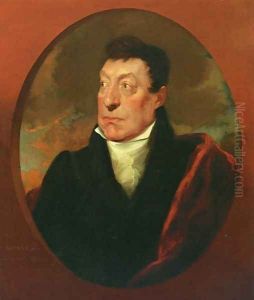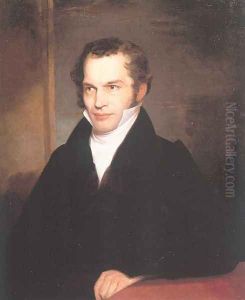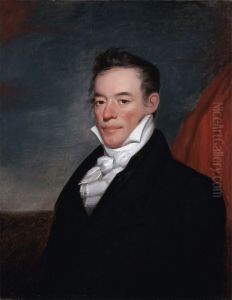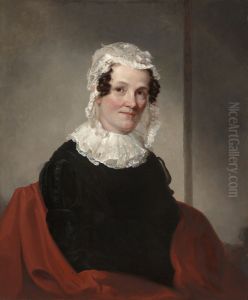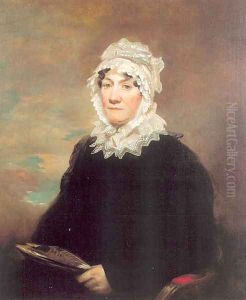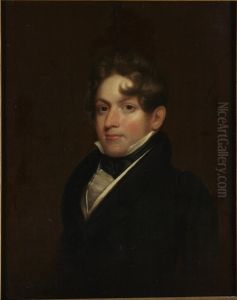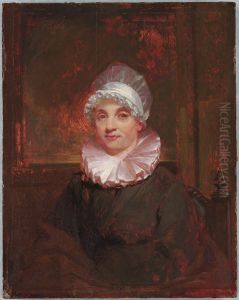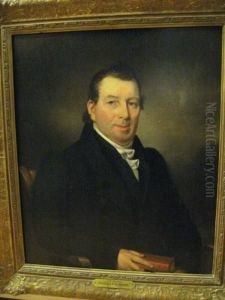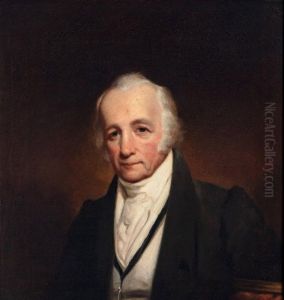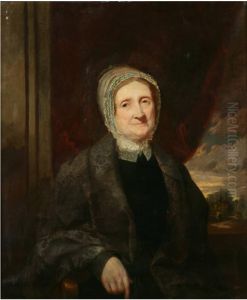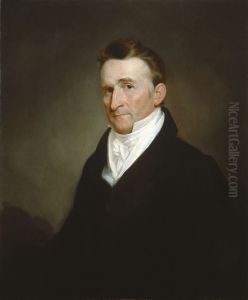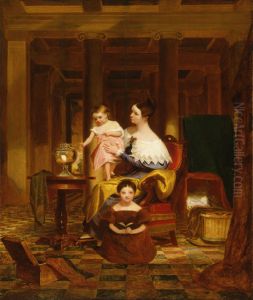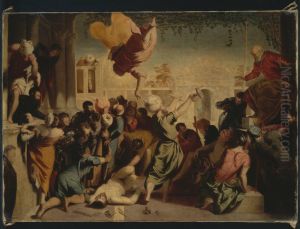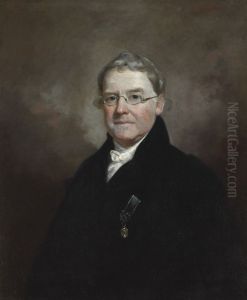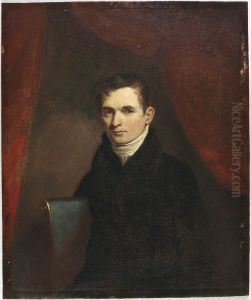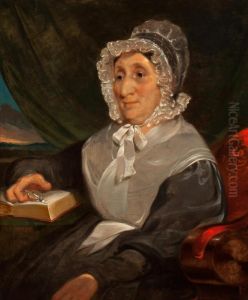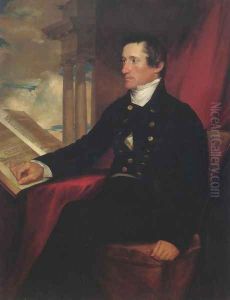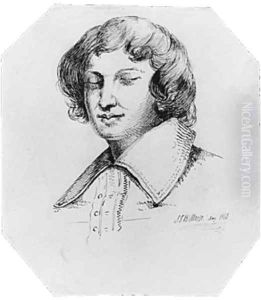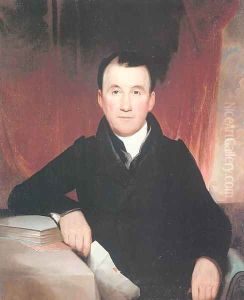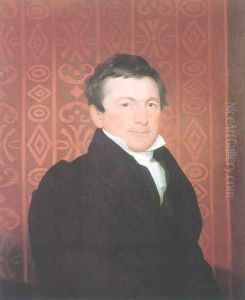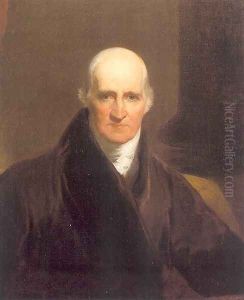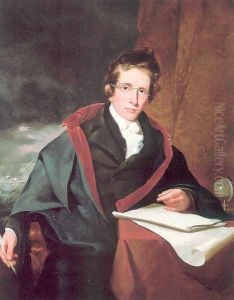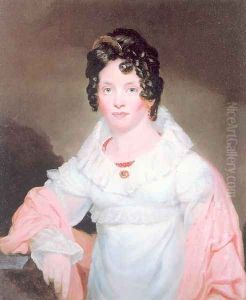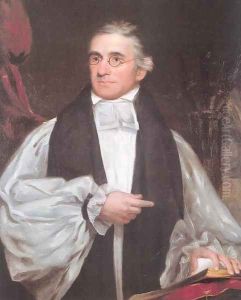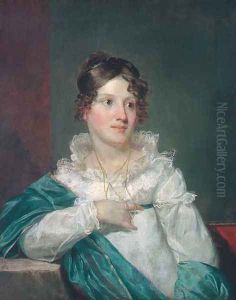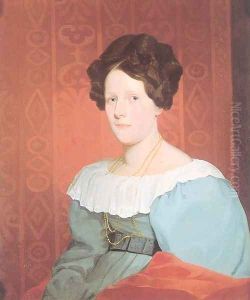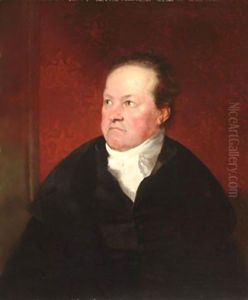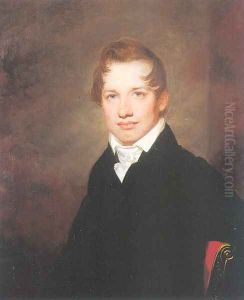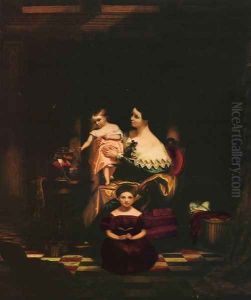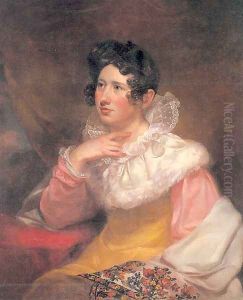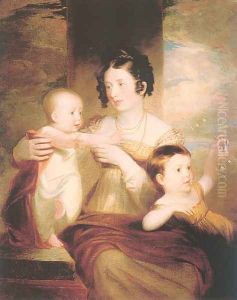Samuel Finley Breese Morse Paintings
Samuel Finley Breese Morse was an American painter and inventor who is best known for inventing the single-wire telegraph system and co-developing Morse code, a method of transmitting text information using a series of on-off tones, lights, or clicks. Born on April 27, 1791, in Charlestown, Massachusetts, Morse was educated at Yale College (now Yale University), where he showed interest in both the arts and sciences, particularly in the studies of electricity.
Initially, Morse pursued a career in art and became a respected portrait painter. He studied art in England and after returning to the United States, he gained recognition for his works, including portraits of notable figures and large historical paintings. One of his most famous works from this period is the 'Gallery of the Louvre' (1831–1833), in which he depicted an imagined assembly of artworks from the Louvre museum.
Morse's life took a dramatic turn after experiencing the limitations of long-distance communication when his wife died suddenly while he was away from home, and he was not informed until much later. This personal tragedy propelled him to seek a means of rapid long-distance communication. In the 1830s, he began developing his version of the electric telegraph, which would eventually revolutionize communication.
After several years of experimentation and facing challenges, including financial difficulties and skepticism, Morse successfully demonstrated his telegraph system in 1844 between Washington, D.C., and Baltimore, Maryland, with the famous message, 'What hath God wrought.' The success of this demonstration led to the widespread adoption of the telegraph and the development of the telegraph industry.
Morse spent the latter part of his life involved in legal battles defending his patents and promoting telegraphy around the world. Despite facing many challenges, he became wealthy and famous as a result of his invention. Morse was also active in civic affairs and was a strong advocate for the arts. He helped found the National Academy of Design in New York and served as its first president.
Samuel Morse passed away on April 2, 1872, in New York City. He left a significant legacy as an artist and inventor, and his contributions to the development of telecommunication have had a lasting impact on the world. Morse code, which he co-developed, continued to be a key communication tool, especially in maritime communications, for over a century after his death and is still recognized and used in various forms today.
